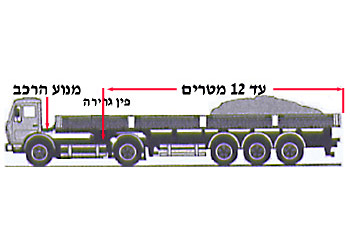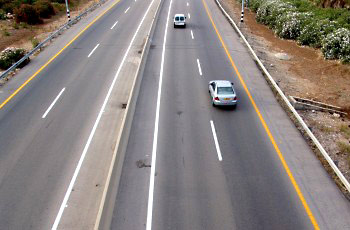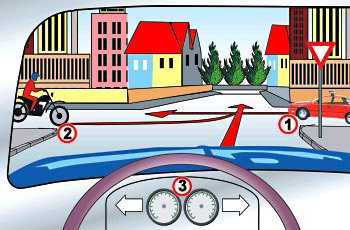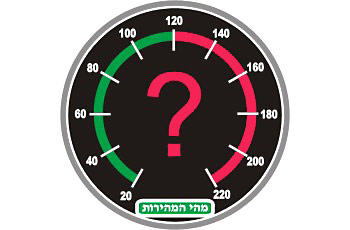Question:1
It is allowed to make a U-turn:
Category : Rules and Regulations
Question:2
Define “built dividing area”:
Category : Rules and Regulations
Question:3
When is it permitted to overtake, in one go, two vehicle that are driving before you on your lane
Category : Rules and Regulations
Question:4
Sudden braking is permitted when:
Category : Rules and Regulations
Question:5
When is it obligatory to operate the speed retarder while driving downhill?
Category : Rules and Regulations
Question:6
What should a driver do after parking his vehicle?
Category : Rules and Regulations
Question:7
When is a driver required to drive on the “hard shoulder” - where the “shoulder” is asphalt-paved and free of traffic - in order to allow another vehicle to overtake him?
Category : Rules and Regulations
Question:8
How should you conduct yourself at an exit from a premises or from an access road to a house, when you are about to cross the sidewalk (pavement)?
Category : Rules and Regulations
Question:9
Is a policeman authorized to require a vehicle driver to undergo a blood test for the presence of alcohol or intoxicating drugs?
Category : Rules and Regulations
Question:10
Who is held responsible for a vehicle causing excessive noise?
Category : Rules and Regulations
Question:11
Who is responsible for a vehicle parked in a prohibited area?
Category : Rules and Regulations
Question:12
When is it permitted to overtake another vehicle?
Category : Rules and Regulations
Question:13
Is a policeman permitted to demand of a vehicle driver to perform a “Breathalyzer test”?
Category : Rules and Regulations
Question:14
What is a driver required to do when the loading of the braking system’s air tanks takes longer than a reasonable time?
Category : Rules and Regulations
Question:15
How is a driver required to conduct himself when approaching schools or playgrounds?
Category : Rules and Regulations
Question:16
The use of which safety restraints is obligatory when driving children less than eight years of age?
Category : Rules and Regulations
Question:17
It is permitted to park, stop or stand a vehicle when the distance between the vehicle’s wheels and the road’s edge doesn’t exceed:
Category : Rules and Regulations
Question:18
For how long is it permitted to leave a broken-down vehicle on a road or in a public place?
Category : Rules and Regulations
Question:19
What does the law state about the non-use of a vehicle for a period of more than one month?
Category : Rules and Regulations
Question:20
What’s the type of the vehicle in the picture and what is its statutory all up length?

Category : Rules and Regulations
Question:21
In which type of road is it obligatory to use the road’s farthest right side?

Category : Rules and Regulations
Question:22
How many passengers are permitted to travel in a commercial vehicle with an overall permissible weight of more than 3,500kg?
Category : Rules and Regulations
Question:23
For safety reasons, it is required to install light-reflecting plates on the rear wall of a trailer or a semi-trailer. Hence, which of the following sentences is correct?
Category : Rules and Regulations
Question:24
“Reasonable speed” is a speed:
Category : Rules and Regulations
Question:25
Define an “axle” of a vehicle:
Category : Rules and Regulations
Question:26
Following a “level crossing” sign that is placed about a 100 meters before the crossing, how would you conduct yourself when a slow vehicle is driving before you?
Category : Rules and Regulations
Question:27
When is a driver required to drive on an asphalt paved hard shoulder?
Category : Rules and Regulations
Question:28
According to the law, in what order should vehicles enter the following intersection?

Category : Rules and Regulations
Question:29
Which vehicles are permitted to pass other vehicles on their right side?
Category : Rules and Regulations
Question:30
What is the maximum permitted speed for driving a private passenger vehicle on a freeway(motorway) (unless otherwise indicted)

Category : Rules and Regulations

